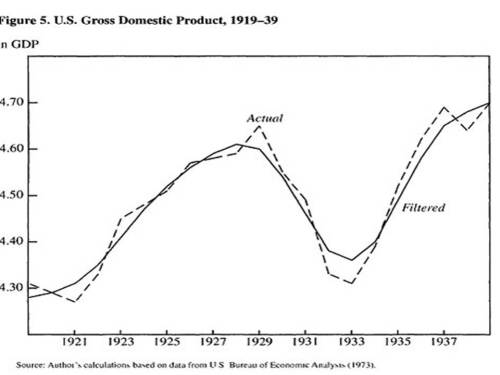Tuesday, July 31 2012 is the 100th anniversary of Milton Friedman’s birth. There is plenty to celebrate. Milton Friedman, by almost anyone’s reckoning, was one of the great figures of twentieth century economics. And I say this as someone who is very far from being an uncritical admirer of Friedman. But he was brilliant, industrious, had a superb understanding of microeconomic theory, and could apply microeconomic theory very creatively to derive interesting and testable implications of the theory to inform his historical and empirical studies in a broad range of topics. He put his exceptional skills as an economist, polemicist, and debater to effective use as an advocate for his conception of the classical liberal ideals of limited government, free trade, and personal liberty, achieving astonishing success as a popularizer of libertarian doctrines, becoming a familiar and sought-after television figure, a best-selling author, and an adviser first to Barry Goldwater, then to Richard Nixon (until Nixon treacherously imposed wage-and-price controls in 1971), and, most famously, to Ronald Reagan. The arc of his influence was closely correlated with the success of those three politicians.
So it is altogether fitting and proper that the Wall Street Journal would commemorate this auspicious anniversary with an appropriate tribute to Friedman’s career and his influence. But amazingly, the Journal was unable to find anyone more qualified to write about Friedman than none other than one of their own editorial writers, Stephen Moore, whose dubious contributions to the spread of economic understanding and enlightenment I have had occasion to write about in the past. Friedman has many students and colleagues who are still alive and active. One would think that there would have been more than a handful of them that could have been asked to write about Friedman on this occasion, but apparently the powers that be at the Journal felt that none of them could do the job as well as Mr. Moore.
How did Mr. Moore do? Well, he recites many of Friedman’s accomplishments as a scholar and as an advocate of less government intervention in the economy. But in his enthusiasm, Mr. Moore was unable to control his penchant for making stuff up without regard to the facts. Writing about the award of the Nobel Prize to Friedman in 1976, Moore makes the following statement:
Friedman was awarded the Nobel Prize in economics for 1976—at a time when almost all the previous prizes had gone to socialists. This marked the first sign of the intellectual comeback of free-market economics since the 1930s, when John Maynard Keynes hijacked the profession.
Here is a list of Nobel Prize winners before Friedman
1969: Ragnar Frisch, Jan Tinbergen
1970: Paul Samuelson
1971: Simon Kuznets
1972: Kenneth Arrow, J. R. Hicks
1973: Wassily Leontief
1974: F. A. Hayek, Gunnar Myrdal
1975: Leonid Kantorovich, T. C. Koopmans
So there were eleven recipients of the Nobel Prize before Friedman. Of these Gunnar Myrdal was a prominent Social Democratic politician in Sweden as well as an academic economist, so perhaps he qualifies as a socialist.
Wassily Leontief was a Russian expatriate; he developed mathematical and empirical techniques for describing the production process of an economy in terms of input-output tables. This was an empirical technique that had no particular ideological significance, but Leontief did seem to think that the technique could be adapted to provide a basis for economic planning. So perhaps he might be also be classified as a socialist.
Paul Samuelson was a prominent adviser to Democratic politicians, an advocate of Keynesian countercyclical policies, but never supported socialism. Kenneth Arrow has been less involved in politics than Samuelson, but has also been a supporter of Democrats. Apparently that is enough to make someone a socialist in Mr. Moore’s estimation.
Ragnar Frisch and Jan Tinbergen were pioneers in the development of econometrics and other mathematical tools used by economists. They also tried to make those tools serviceable to policy makers. Frisch and Tinbergen were classic technocrats who, as far as I can tell, carried very little ideological baggage. But perhaps Mr. Moore has subjected the baggage to his socialism detector and heard the alarm bells go off.
J. R. Hicks was a prominent English economic theorist who was not identified strongly with any political party. Although he helped create the standard Keynesian IS-LM model, he was theoretically eclectic and as far as I know never wrote a word advocating socialism.
Simon Kuznets was an archetypical empirical technocratic economist who was one of the fathers of national income accounting. He actually was the coauthor of Milton Friedman’s first book, Income from Independent Professional Practice, hardly evidence of a socialistic mindset.
T. C. Koopmans, an early pioneer of econometric techniques, was awarded the Nobel Prize largely for his work in developing the mathematical techniques of linear programming which is a method of finding solutions to a class of problems that can be understood in terms of allocating resources efficiently to achieve a certain desired result, such as maximizing the nutritional content from a given expenditure on food or minimizing the cost to obtain a given level of nutrients. Leonid Kantorovich, a Soviet mathematician, developed the mathematical techniques of linear programming even before Koopmans. His results were actually subversive of Marxian theory, but their deeper implications were not understood in the Soviet Union. Again, the Nobel Prize was awarded for technical contributions, not for any particular economic policy or economic ideology.
But the most amazing thing about Mr. Moore’s statement about the bias of Nobel Prize Committee in favor of socialists is that he effectively re-writes history as if F. A. Hayek had not already won the Nobel Prize two years before Friedman. What is one supposed to make of Moore’s statement that the award of the Nobel Prize to Friedman in 1976 “was the FIRST sign of the intellectual comeback of free-market economics since the 1930s?” What was Hayek, Mr. Moore? Chopped Liver?

